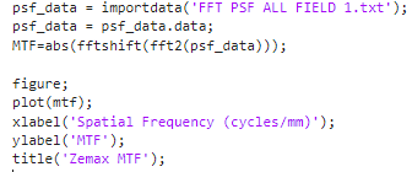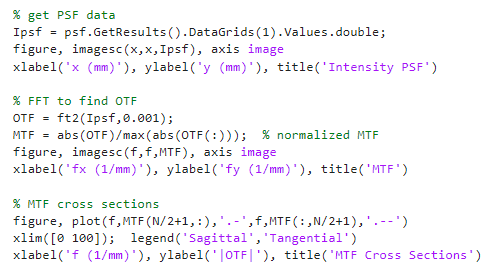HI everyone
How do I use PSF to plot MTF in MATLAB?
The resulting plot may differ from the commonly used MTF plot.
How to plot the MTF with separate tangential (TAN) and sagittal (SAG) components?

HI everyone
How do I use PSF to plot MTF in MATLAB?
The resulting plot may differ from the commonly used MTF plot.
How to plot the MTF with separate tangential (TAN) and sagittal (SAG) components?

Best answer by Jeff.Wilde
Hi Shun,
Yes, it’s fairly straightforward to use the API to extract the intensity PSF and then apply an FFT in Matlab to calculate the OTF.

Here’s what I find using the lens model you attached:

In this case I simply used the polychromatic PSF from OpticStudio, but it’s not much harder to extract the individual monochromatic PSF’s, then combine them in Matlab and take an FFT.
Regards,
Jeff
Enter your E-mail address. We'll send you an e-mail with instructions to reset your password.